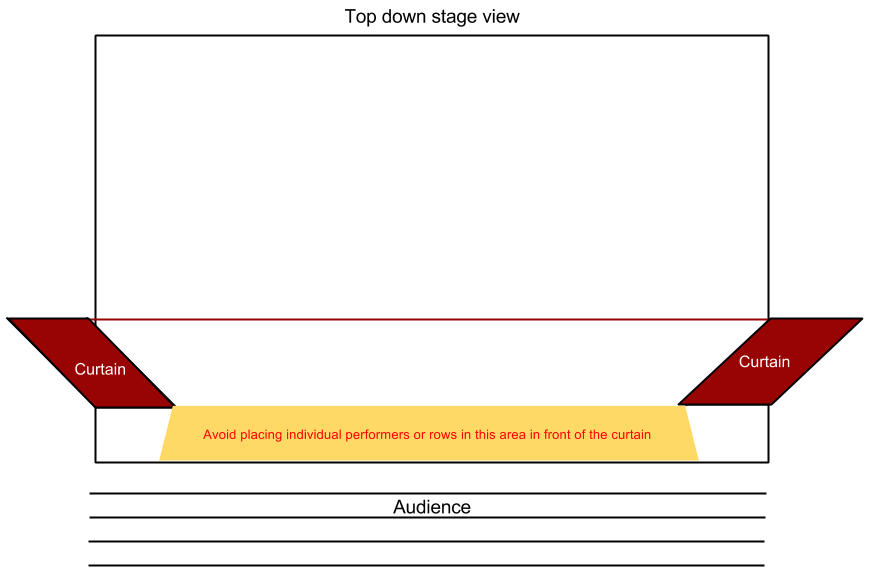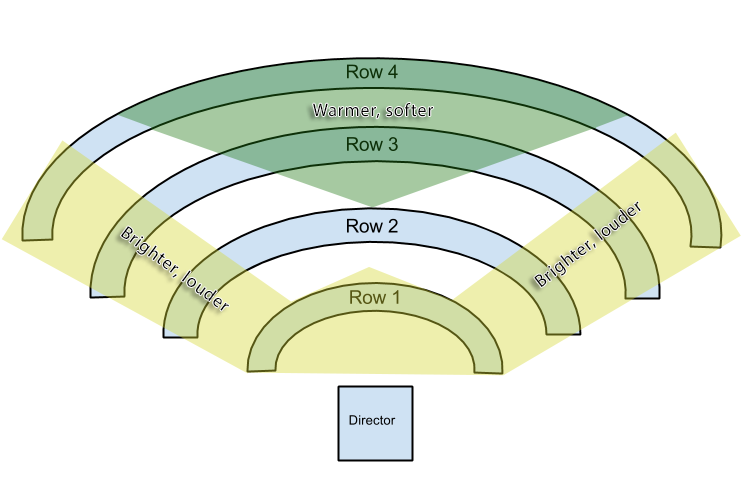5-Minute Read: The Ensemble Seating Puzzle
There are many factors that we weigh when configuring our band's seating arrangement. Some of them are classroom management-related decisions about who can sit near who. Sometimes we place our best players on the outside of the ensemble because it is a traditional and visible place of honor to be earned by our principal performers.
But most often, our ensemble seating is more a product of habit and comfort than a musical decision. And that's too bad, because how we place our musicians can vastly affect the product the audience hears. I personally have been the victim of my own poor ensemble placement choices on a festival stage, despite more experienced music educators trying to correct my errors. Therefore, please take a moment to consider the following tips regarding your seating configuration at a performance.
Get to Know the Performance Space
If you're lucky, then you have performed with your band on the assessment stage at least once before, and are therefore aware of any acoustical issues presented by the performance space. If, however, you have never performed on that stage, do some reconnaissance! Contact your colleagues and ask them about the stage. Make a visit to the performance site in advance to check it out. If the stage is the home of another band director, they will certainly be happy to share insights into its acoustical quirks. Most importantly, if you're not the very first band to perform at festival, go out and listen to the ensembles that precede your own. Does the snare drum leap out too loud in the balance because of a hard stage floor and back wall? You need to have a piece of carpet to put under your snare. Is there a hanging curtain several feet behind the edge of the stage? Don't let your outermost players or front row stick out beyond that curtain, as they will be louder and more acoustically "present" than the rest of the ensemble (see diagram, click or tap for a larger view). Are there additional hanging side curtains towards the rear of the stage that could absorb the sound of certain lower and middle voices? Make sure you make note and adjust!
Know What Sounds to Pass Through More Bodies
Distance and the human body, specifically those of your performers, are the two primary factors related to how to configure your ensemble's seating. The more rows of performer bodies you place between a musician and their audience, the more warm and softer their sound will become. That is because
- sound, like any mechanical wave, loses intensity and volume over distance, and
- the clothing and soft tissue of human performers absorb some of the brunt of the sound wave's energy, particularly the brightest overtones.
Which instruments need to be placed behind more bodies and distance? Well, that depends on your band. You know the performers who tend to have their sound occasionally "spotlighted," despite your best instruction to the contrary. That being said, putting trumpets, trombones, and the lower saxes (if yours tend to have an edgy sound) behind more bodies is often a good idea. Consider also putting the horns behind some bodies, as their sound benefits from that softening influence greatly.+ That's why I would caution against always placing your top performers on the outside of a row. Yes, there is a tradition of placing the first chair player on the outside where they are most visible to their families. But, this also spotlights the sound of your often-loudest players, while burying your weaker, lower parts. See the chart (click or tap for a larger view) for a guide to placing your instruments. Consider placing your lower voice trumpets and clarinets on the outside where they can be better heard.
Brass Bell Placement Matters
Take note of the direction of your brass bells. Their placement is important both for what the audience hears, and for the intra-ensemble listening your musicians execute during a performance. For example, a euphonium player has a right-facing bell (from the performer's perspective). Therefore:
- When seating them, ask yourself if you want that performer's bell pointed at the audience (on the director's left), or away from the audience (on the director's right).
- Your second euphonium (if any) should be seated to the first-chair player's right, so that he/she can hear and tune to the stronger performer.
Horn players have a similar configuration concern, with the stronger player needing to place weaker players to their right, as that is where their bell points. Trombone bells are in the opposite direction. In contrast, your trumpet bells are center to their bodies and forward facing. So try placing your first trumpets in the center of the section, so that the weaker, lower parts can listen in to the strongest musicians. Which way do your tuba bells point? It varies from model to model, so you must take this into consideration.
These factors will vary from band to band, year to year, and stage to stage. So avoid a rut, and never be afraid to play with your band set-up. You can experiment in the weeks leading up to a performance, discovering what changes have what effects on your band's sound and balance. Give it a try!
+ NOTE: Directors often want their horns placed more forward in the ensemble so they can be better heard. However, consider placing a plexiglass reflector behind your horns (or a folded music stand in a pinch) behind your horns. That way, you can soften and warm their sound, but still hear them in your band's balance.



